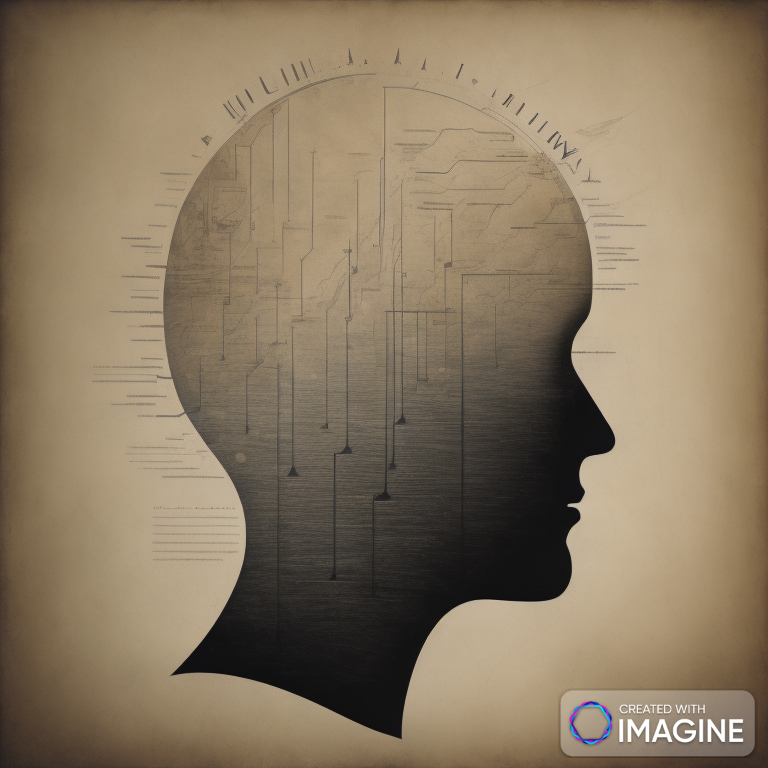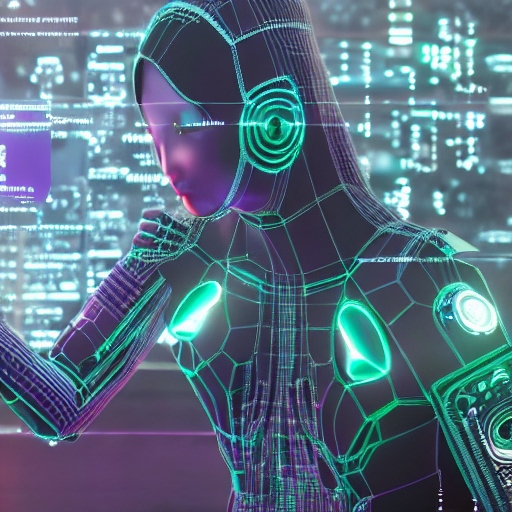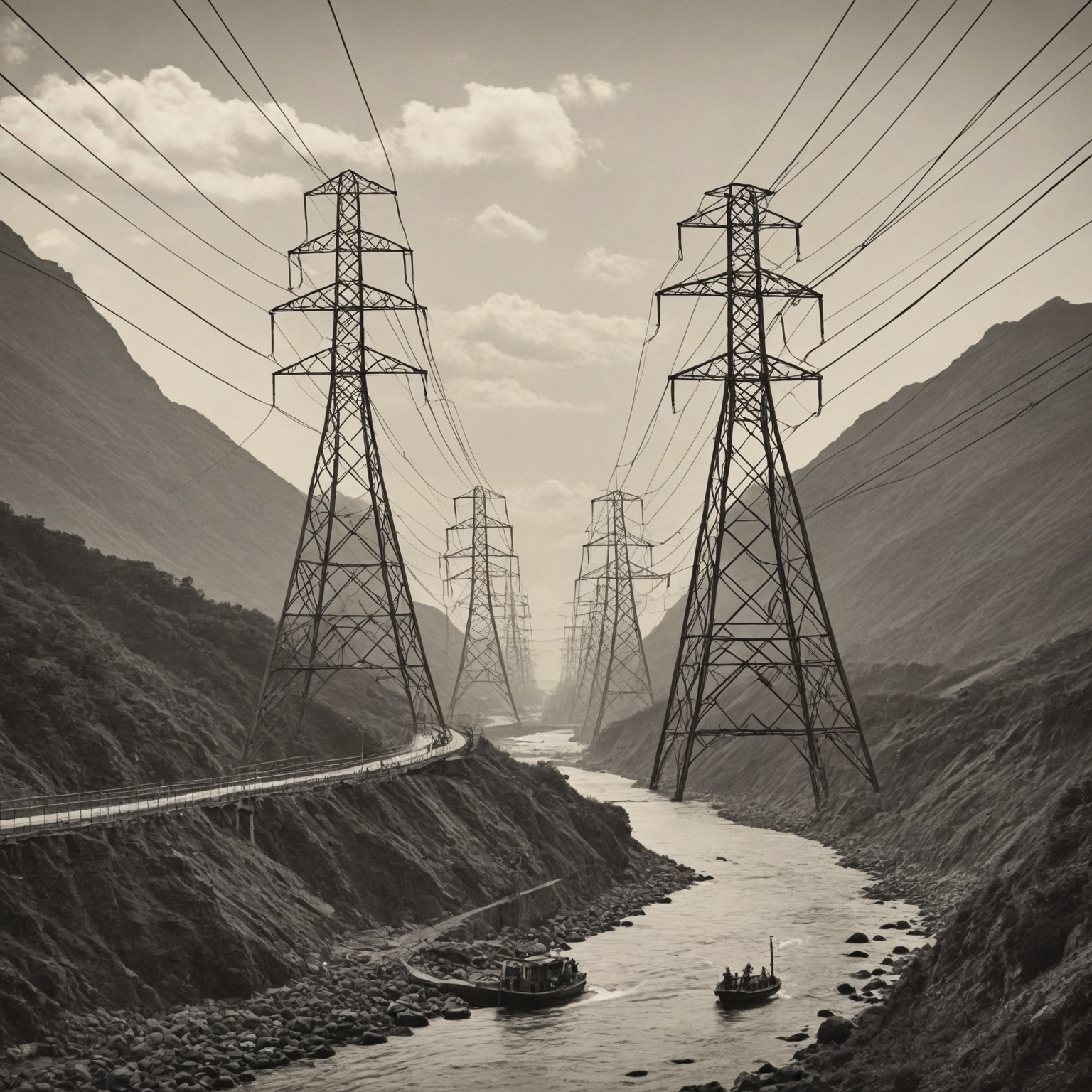The “Laws of Thought” refer to three fundamental principles in classical logic that were formulated by the ancient Greek philosopher Aristotle. These laws are considered foundational to logical reasoning and form the basis for classical deductive reasoning. The three laws are:
- Law of Identity: This law states that each thing is identical with itself. In other words, if a statement is true, then it is true. The law of identity is often expressed as “A is A,” meaning that any object or concept is identical to itself. Example: If X is a rose, then X is a rose.
- Law of Contradiction: This law states that contradictory statements cannot both be true in the same sense simultaneously. In other words, if a statement is true, then its negation is false, and vice versa. Example: If Y is not a square, then Y is not a square cannot be false.
- Law of Excluded Middle: This law states that a statement is either true or false; there is no middle ground or third option. It asserts that for any proposition, either that proposition is true, or its negation is true.Example: For any proposition P, either P is true, or not-P is true.
These laws provide a logical foundation for reasoning and argumentation. While classical logic has been foundational in Western philosophy and mathematics, it’s essential to note that other systems of logic, including non-classical logics, have been developed that may not strictly adhere to these three laws
let’s delve into each of the Laws of Thought in more detail:
1. Law of Identity:
Definition: The Law of Identity asserts that each thing is identical with itself. This law forms the basis for establishing the identity of an object or concept.
Explanation:
- In logic, this law is often expressed as “A is A,” signifying that any entity is the same as itself.
- It serves as a fundamental principle in reasoning, allowing us to make meaningful statements about the consistency and persistence of entities.
Examples:
- If we have a specific chair, it is identified as itself; thus, “This chair is this chair.”
- In mathematics, the concept of equality aligns with the Law of Identity:
Applications:
- Computer Science: The Law of Identity is fundamental in programming and software development. Variables and objects are defined and identified based on this law.
- Philosophy: Identity is a central concept in metaphysics, where philosophers explore the nature of being and existence.
Scientific Studies: While not explicitly a subject of scientific study, the Law of Identity underpins the consistency required for scientific research and experimentation. Scientific endeavors rely on the assumption that entities maintain their identity throughout observations.
2. Law of Contradiction:
Definition: The Law of Contradiction states that contradictory statements cannot both be true in the same sense simultaneously.
Explanation:
- If a proposition is true, then its negation is false, and vice versa. This law prevents logical contradictions within a system.
Examples:
- If we assert “The sky is blue,” its contradiction “The sky is not blue” cannot be simultaneously true.
- In mathematical terms, 2+2=42+2=4 contradicts 2+2≠42+2=4.
Applications:
- Philosophy: This law is foundational in philosophical discourse, preventing the acceptance of logically contradictory statements.
- Computer Science: Ensures consistency in logical operations and decision-making in algorithms.
Scientific Studies: Studies in formal logic and philosophy extensively discuss the Law of Contradiction, examining its implications for reasoning and argumentation.
3. Law of Excluded Middle:
Definition: The Law of Excluded Middle asserts that a statement is either true or false; there is no middle ground or third option.
Explanation:
- For any proposition, either that proposition is true, or its negation is true. There are no intermediate truth values.
Examples:
- For a coin flip, it is either heads or tails; there is no third outcome.
- In classical logic, a statement like “It is raining” is either true or false.
Applications:
- Decision-Making: The law simplifies decision-making by presenting clear binary choices.
- Mathematics: It is foundational in mathematical proofs, where a statement is either proven or not proven.
Scientific Studies: While not a subject of scientific study per se, the Law of Excluded Middle is fundamental for constructing clear hypotheses and making definite conclusions in scientific research.
4. Principle of Non-Contradiction:
Definition: The Principle of Non-Contradiction builds on the Law of Contradiction, emphasizing that contradictory propositions cannot both be true in the same context.
Explanation:
- This principle extends the idea to the broader realm of reality, stating that no two contradictory states of affairs can exist simultaneously.
Examples:
- If an apple is on the table, it cannot simultaneously not be on the table.
- In mathematics, a number cannot be both odd and even at the same time.
Applications:
- Philosophy: Fundamental in metaphysics, guiding discussions on the nature of reality and existence.
- Science: Ensures the coherence and consistency of scientific theories and models.
Scientific Studies: While not directly studied as a scientific concept, the Principle of Non-Contradiction underlies the logical coherence required for scientific theories and models.
5. Law of Rational Inference:
Definition: The Law of Rational Inference posits that valid deductions can be made from true premises. It underlies the process of drawing conclusions through reasoning.
Explanation:
- If the premises of an argument are true and the argument is logically valid, the conclusion must also be true.
Examples:
- Given the premise “All humans are mortal” and “Socrates is human,” the rational inference is “Socrates is mortal.”
Applications:
- Logic: Central to logical reasoning and deduction, forming the basis of sound argumentation.
- Artificial Intelligence: Guides algorithms in making logical inferences based on available data.
Scientific Studies: Studied in formal logic and philosophy, the Law of Rational Inference is a cornerstone for understanding deductive reasoning.
6. Law of Rational Explanation:
Definition: The Law of Rational Explanation asserts that events and phenomena have explanations that can be understood through reason and cause-effect relationships.
Explanation:
- It presupposes that events occur for specific reasons and are not arbitrary, providing a basis for understanding the world.
Examples:
- The falling of an apple is explained by gravitational forces acting on it.
- In physics, events are often explained through mathematical models and laws.
Applications:
- Science: Essential for scientific inquiry, encouraging the search for rational explanations for observed phenomena.
- Philosophy: Tied to the philosophy of science, exploring the nature of explanations and causation.
Scientific Studies: The Law of Rational Explanation aligns with the scientific method’s goal to provide coherent and rational explanations for natural phenomena.
7. Law of Causality:
Definition: The Law of Causality posits that every event has a cause, suggesting a deterministic relationship between events.
Explanation:
- It asserts that events do not occur randomly; rather, each event is the effect of a specific cause or set of causes.
Examples:
- The ringing of a bell is caused by striking it.
- The sunrise is caused by the rotation of the Earth.
Applications:
- Science: Fundamental to scientific inquiry, prompting the investigation of causal relationships.
- Deterministic Systems: In fields like physics and engineering, the law guides the understanding and prediction of system behaviors.
Scientific Studies: Explored in various scientific disciplines, the Law of Causality is foundational to understanding natural processes and predicting outcomes.
8. Probabilistic Reasoning:
Definition: Probabilistic Reasoning acknowledges that not all events are determined with certainty and allows for reasoning about likelihoods and probabilities.
Explanation:
- Unlike strict determinism, this recognizes uncertainties and allows for reasoning about events based on probabilities.
Examples:
- Weather forecasts provide probabilities of rain or sunshine.
- Quantum mechanics incorporates probabilistic elements into the behavior of subatomic particles.
Applications:
- Statistics: Central to statistical reasoning, allowing for uncertainty quantification.
- Artificial Intelligence: Probabilistic reasoning is employed in machine learning algorithms to make predictions and decisions under uncertainty.
Scientific Studies: Explored in fields like probability theory and statistics, Probabilistic Reasoning is crucial for dealing with uncertainties in scientific and real-world contexts.
9. Law of Necessity:
Definition: The Law of Necessity asserts that if certain conditions are given, a certain consequence or result must follow.
Explanation:
- It establishes a link between antecedent conditions and the necessary outcome, assuming no external interference.
Examples:
- If water is heated to 100 degrees Celsius at standard atmospheric pressure, it will boil.
- In logic, if “A implies B” and “A is true,” then “B must be true.”
Applications:
- Science: Applied in scientific laws and principles, predicting outcomes based on known conditions.
- Engineering: Essential for designing systems and structures with predictable behaviors.
Scientific Studies: Studied in logical and scientific contexts, the Law of Necessity provides a framework for understanding deterministic relationships in various domains.
10. Law of Identity:
Definition: The Law of Identity asserts that each entity, whether an object, concept, or individual, has a specific and unique identity that distinguishes it from everything else.
Explanation:
- It forms the basis for recognizing and individuating entities based on their distinct characteristics.
Examples:
- Each person has a unique set of biometric features, defining their identity.
- In mathematics, each number has its identity, such as 1 being distinct from 2.
Applications:
- Philosophy: Central to discussions on personal identity, existence, and individuation.
- Information Systems: The law is applied in data systems where unique identifiers distinguish entities.
Scientific Studies: Explored in philosophical discourse and foundational to the understanding of individuality and uniqueness across various disciplines.
11. Law of Excluded Middle:
Definition: The Law of Excluded Middle posits that, in a given context, a statement is either true or false, with no middle ground or third option.
Explanation:
- It eliminates the possibility of an intermediate truth value, insisting that a proposition must be either affirmed or denied.
Examples:
- In classical logic, a statement like “It is raining” is either true or false, with no middle ground.
- Binary code in computing operates on the principle of excluded middle, where bits are either 0 or 1.
Applications:
- Mathematics: Fundamental to mathematical logic, where propositions are often treated as either true or false.
- Legal Reasoning: Legal systems often rely on the principle of excluded middle in determining the truth or falsity of statements.
Scientific Studies: Studied extensively in formal logic and philosophy, the Law of Excluded Middle is foundational to understanding truth values and logic systems.
12. Temporal Logic:
Definition: Temporal Logic extends traditional logic to handle time-dependent statements, allowing for the expression of temporal relationships and sequences.
Explanation:
- It enables reasoning about events and propositions with respect to their occurrence in time, introducing operators like “always,” “eventually,” and “until.”
Examples:
- “It will rain tomorrow” expresses a proposition in temporal logic.
- In computer science, temporal logic is used to specify the timing requirements of systems.
Applications:
- Computer Science: Applied in the formal verification of software systems with temporal constraints.
- Philosophy of Time: Temporal logic is explored in the philosophical discourse on the nature of time and events.
Scientific Studies: Developed as a specialized branch of logic, Temporal Logic is studied in computer science, formal methods, and philosophical investigations into the nature of time.
13. Fuzzy Logic:
Definition: Fuzzy Logic allows for the representation of degrees of truth, acknowledging that not all propositions are strictly true or false but can have intermediate or fuzzy truth values.
Explanation:
- It introduces the concept of membership degrees, allowing statements to be partially true or false.
Examples:
- “The room is warm” in fuzzy logic might have a truth value of 0.7, indicating a degree of warmth.
- Fuzzy logic is employed in control systems where inputs and outputs may have gradual transitions.
Applications:
- Control Systems: Used in systems where precise boundaries between states are challenging to define.
- Linguistics: Applied in natural language processing, accommodating linguistic nuances.
Scientific Studies: Developed to address the limitations of classical logic in dealing with imprecision, Fuzzy Logic is studied in control theory, artificial intelligence, and linguistics.
14. Quantum Logic:
Definition: Quantum Logic departs from classical logic, introducing principles that align with the peculiarities of quantum mechanics, such as superposition and entanglement.
Explanation:
- It accommodates the non-commutativity of quantum properties, challenging classical notions of logic.
Examples:
- Quantum superposition, where a quantum system can exist in multiple states simultaneously.
- The principle of quantum entanglement, where particles become correlated and share properties instantaneously.
Applications:
- Quantum Computing: Quantum logic forms the foundation for quantum algorithms and quantum information processing.
- Physics: Applied in the conceptual framework of quantum mechanics.
Scientific Studies: Developed to address the unique characteristics of quantum systems, Quantum Logic is studied in quantum computing, quantum information theory, and foundational issues in quantum mechanics.
15. Modal Logic:
Definition: Modal Logic deals with modalities, expressing the necessity, possibility, or impossibility of propositions.
Explanation:
- It introduces modal operators like “necessarily” and “possibly” to qualify statements with respect to different possible worlds or conditions.
Examples:
- “It is necessarily true that water boils at 100 degrees Celsius.”
- “It is possibly true that it will rain tomorrow.”
Applications:
- Philosophy: Explored in philosophical discussions on necessity, possibility, and contingency.
- Computer Science: Applied in formal verification and knowledge representation.
Scientific Studies: Modal Logic is studied in philosophy, computer science, and artificial intelligence, providing a framework for reasoning about necessity and possibility.
16. Paraconsistent Logic:
Definition: Paraconsistent Logic allows for the acceptance of contradictions without leading to logical explosion or inconsistency.
Explanation:
- It introduces a nuanced approach to handling contradictions, acknowledging that certain contradictions may coexist without causing the breakdown of logical systems.
Examples:
- “This statement is false,” a classic example of a logical paradox.
- Paraconsistent logic allows for the exploration of systems where contradictions are tolerated under specific conditions.
Applications:
- Artificial Intelligence: Used in knowledge representation systems where conflicting information may be present.
- Philosophy: Explored in discussions on the nature of contradictions and consistency.
Scientific Studies: Paraconsistent Logic is studied in the context of non-classical logics, providing insights into the handling of contradictions in various domains.
17. Non-Monotonic Logic:
Definition: Non-Monotonic Logic allows for the revision of beliefs in light of new information without necessarily discarding existing beliefs.
Explanation:
- It acknowledges that the addition of new information may lead to the modification, but not necessarily the abandonment, of previously held beliefs.
Examples:
- In legal reasoning, the introduction of new evidence may lead to a revision of the initial judgment without negating it entirely.
- Non-monotonic logic is used in AI systems that need to adapt their conclusions based on evolving information.
Applications:
- Artificial Intelligence: Applied in systems that require the ability to revise conclusions in dynamic environments.
- Cognitive Science: Explored in studies of human reasoning and belief revision.
Scientific Studies: Non-Monotonic Logic is studied in artificial intelligence, cognitive science, and philosophy of science, providing a framework for reasoning in the face of evolving information.
18. Dialetheism:
Definition: Dialetheism accepts the existence of true contradictions, asserting that there are statements that can be simultaneously true and false.
Explanation:
- It challenges the principle of non-contradiction, suggesting that certain propositions can possess both truth and falsity.
Examples:
- “This statement is both true and false.”
- Dialetheism challenges traditional notions of logical consistency, exploring scenarios where contradictions coexist.
Applications:
- Philosophy: Explored in discussions on the nature of truth, logic, and the limits of classical reasoning.
- Computational Logic: Applied in certain branches of computer science to handle contradictions in information systems.
Scientific Studies: Dialetheism is a topic of study in philosophy of logic, philosophy of language, and computer science, offering alternative perspectives on the handling of contradictions.
These detailed explanations provide a comprehensive understanding of each law of thought, including its applications, examples, and relevance in various scientific and philosophical domains.
19. Relevance Logic:
Definition: Relevance Logic emphasizes the importance of relevance in drawing logical inferences, asserting that only relevant information should be considered in the evaluation of propositions.
Explanation:
- It provides a nuanced approach to logic by considering the relevance of premises to the conclusion, avoiding unnecessary or unrelated information.
Examples:
- In legal reasoning, relevance logic ensures that only pertinent evidence is admitted in court.
- Relevance logic is applied in computer science to model systems where irrelevant information is excluded.
Applications:
- Legal Reasoning: Used to ensure the admissibility of evidence and arguments based on relevance.
- Information Retrieval: Applied in systems that prioritize relevant information in search and retrieval processes.
Scientific Studies: Relevance Logic is studied in philosophy, artificial intelligence, and cognitive science, offering insights into the role of relevance in logical reasoning.
20. Deontic Logic:
Definition: Deontic Logic deals with concepts of obligation, permission, and prohibition, providing a logical framework for reasoning about normative statements.
Explanation:
- It introduces deontic operators like “ought,” “may,” and “must” to express statements related to ethical or legal norms.
Examples:
- “You ought to tell the truth” expresses an obligation in deontic logic.
- Legal reasoning often involves deontic statements regarding what is permitted or prohibited.
Applications:
- Ethics: Used to reason about moral and ethical principles and obligations.
- Legal Theory: Applied in legal reasoning to express and analyze normative statements.
Scientific Studies: Deontic Logic is studied in philosophy, legal theory, and artificial intelligence, providing a formalized approach to normative reasoning.
21. Epistemic Logic:
Definition: Epistemic Logic focuses on the representation of knowledge, belief, and the dynamics of information in logical systems.
Explanation:
- It introduces epistemic operators like “knows,” “believes,” and “is aware of” to express statements about knowledge and belief.
Examples:
- “John knows that it is raining” expresses a proposition in epistemic logic.
- Epistemic logic is used in artificial intelligence for modeling agents’ beliefs and knowledge.
Applications:
- Artificial Intelligence: Applied in multi-agent systems to model and reason about agents’ knowledge and beliefs.
- Game Theory: Used to analyze strategic interactions by considering players’ beliefs and knowledge.
Scientific Studies: Epistemic Logic is studied in philosophy, computer science, and game theory, providing a formal framework for reasoning about knowledge and belief.
22. Intuitionistic Logic:
Definition: Intuitionistic Logic challenges classical logic by rejecting the principle of the excluded middle, asserting that not all statements are necessarily either true or false.
Explanation:
- It introduces the idea that some mathematical statements may lack a determinate truth value.
Examples:
- In intuitionistic logic, the statement “This mathematical proof is incomplete” may lack a clear truth value.
- Intuitionistic logic is applied in constructive mathematics, where proofs are seen as constructive processes.
Applications:
- Mathematics: Used in constructive mathematics, where the focus is on the constructability of mathematical objects.
- Computer Science: Applied in type theory and programming languages with a constructive approach.
Scientific Studies: Intuitionistic Logic is studied in mathematical logic, philosophy of mathematics, and computer science, providing an alternative to classical logic with implications for the foundations of mathematics.
23. Doxastic Logic:
Definition: Doxastic Logic deals with beliefs and belief revision, providing a logical framework for reasoning about changing beliefs over time.
Explanation:
- It introduces doxastic operators like “believes” and “changes belief” to express statements about beliefs and belief updates.
Examples:
- “Mary believes it will rain tomorrow but may change her belief after checking the weather forecast.”
- Doxastic logic is applied in artificial intelligence for modeling belief dynamics in intelligent agents.
Applications:
- Artificial Intelligence: Used in modeling agents’ beliefs, belief updates, and reasoning about changing information.
- Cognitive Science: Applied to study human belief revision and updating processes.
Scientific Studies: Doxastic Logic is studied in philosophy, artificial intelligence, and cognitive science, offering insights into the dynamics of belief systems.
24. Feminist Logic:
Definition: Feminist Logic critically examines traditional logical systems and methodologies from a feminist perspective, addressing issues of gender, power, and representation.
Explanation:
- It seeks to uncover and challenge gender biases, stereotypes, and exclusionary practices within traditional logic.
Examples:
- Critiques of traditional logic that may perpetuate gender stereotypes or marginalize certain perspectives.
- Feminist logic is applied in philosophy to reevaluate the foundations of logical reasoning.
Applications:
- Philosophy: Used to critique and reformulate logical systems to be more inclusive and sensitive to gender issues.
- Social Sciences: Applied in feminist studies to analyze and challenge patriarchal structures using logical frameworks.
Scientific Studies: Feminist Logic is a topic of study in philosophy and gender studies, contributing to a broader understanding of the social implications of logical systems.
These additional points further elaborate on various branches and perspectives within the realm of logic, showcasing the diversity of applications and implications within each subfield.







